In an interconnected digital era, the global accessibility of websites has become not just a possibility but a necessity. The ability to cater to a diverse audience, irrespective of language barriers, is a cornerstone for online success. If your WordPress website is in the pursuit of broadening its reach, this guide is crafted just for you. Welcome to “Lost in Translation? Uncover the Best 7 WordPress Translation Plugins for Seamless Multilingual Websites,” where we embark on a journey to demystify the world of translation plugins. As we navigate through the complexities of this essential aspect of website management, we’ll equip you with the knowledge to make an informed decision for creating a website experience that seamlessly transcends languages.
The Significance of Website Translation:
The internet has made the world a smaller place, and websites that cater to a global audience enjoy a competitive advantage. We’ll explore why translating your website’s content is essential, examining the positive impacts on user experience and search engine optimization (SEO). Discover how a well-translated site can break language barriers and attract a more diverse audience.
Understanding the Criteria:
Choosing the right translation plugin involves considering various factors. We’ll delve into the criteria for evaluating these plugins, including ease of use, translation accuracy, compatibility with other plugins and themes, and the overall performance impact on your website. Additionally, we’ll emphasize the importance of user reviews and ratings in making an informed decision.
The Top 7 WordPress Translation Plugins:
Let’s explore the significance of website translation, understand the criteria for choosing the right plugin, here’s the top 7 WordPress translation plugins that promise to transform your website into a truly global platform.
1. Weglot:
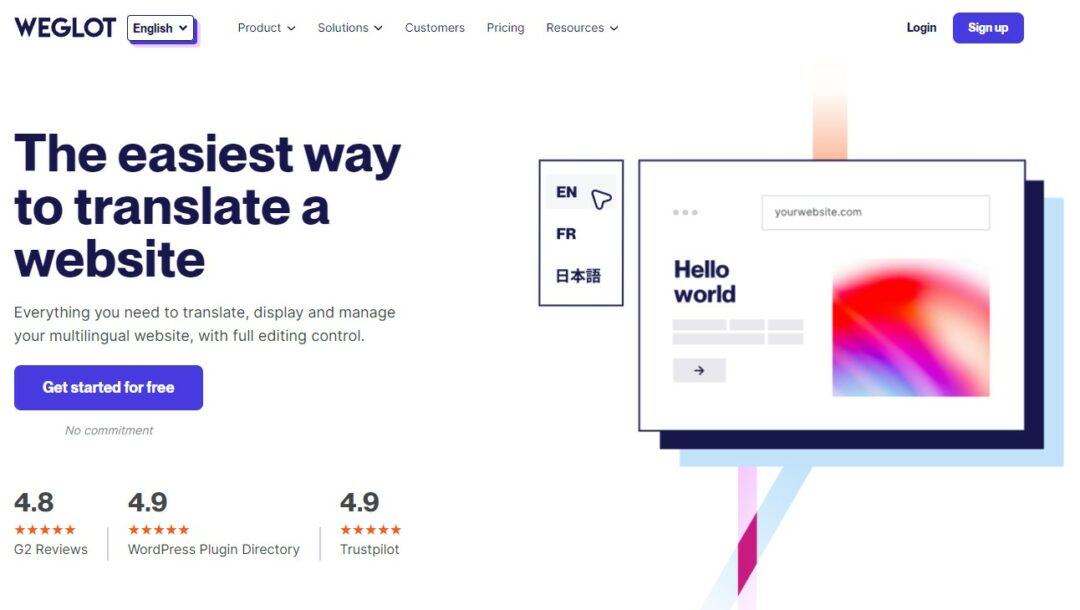
Weglot is a powerful and user-friendly WordPress translation plugin designed to simplify the process of making your website multilingual. With Weglot, language translation becomes a seamless experience, allowing you to reach a broader audience effortlessly. The plugin boasts a range of features, from automatic content translation to customizable language-switcher options, ensuring that your site is not only linguistically diverse but also tailored to your specific preferences.
Weglot’s intuitive interface and real-time translations make it an ideal choice for both beginners and experienced users alike. Additionally, it seamlessly integrates with various themes and plugins, minimizing compatibility issues and providing a hassle-free translation solution for your WordPress website. Whether you’re managing a blog, an e-commerce store, or a business site, Weglot is designed to enhance user experience and break down language barriers, making your content accessible to a global audience with ease.
2. WPML (WordPress Multilingual Plugin):
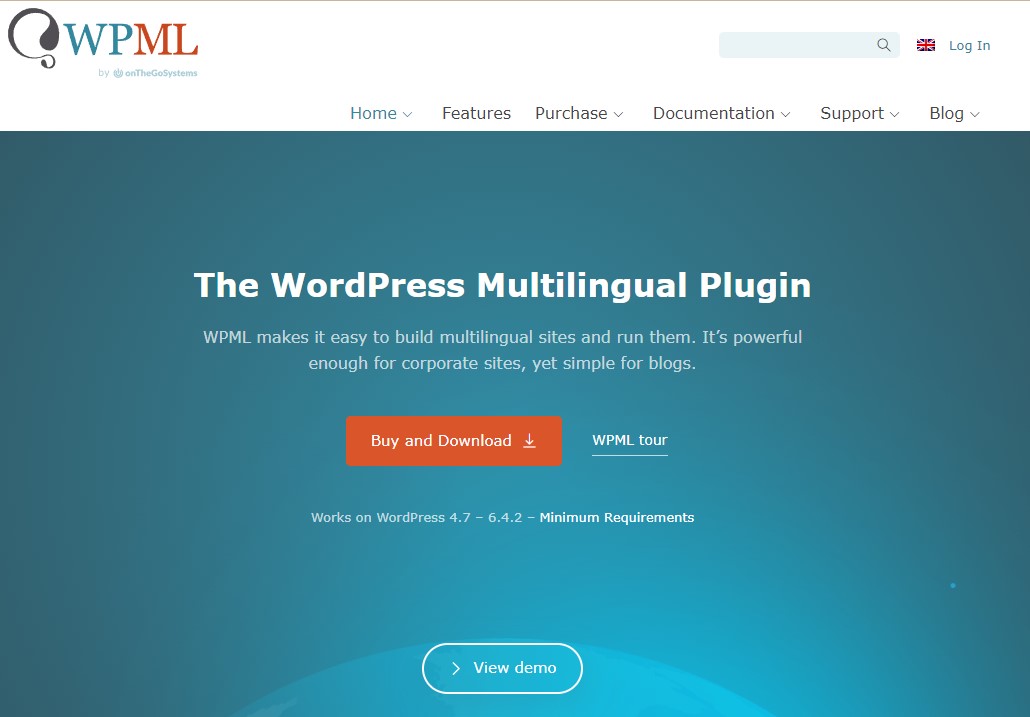
WPML, or the WordPress Multilingual Plugin, stands out as a versatile and widely embraced solution for website owners aiming to make their WordPress sites multilingual. Offering a comprehensive set of features, WPML facilitates the translation of website content effortlessly.
One of its key strengths lies in its user-friendly interface, allowing users to manage translations directly from the WordPress dashboard. Beyond mere translation capabilities, WPML ensures a smooth integration with various themes and plugins, maintaining the coherence of your website’s design and functionality across different language versions. With a reputation for reliability and consistent updates, WPML has earned the trust of countless website owners seeking a robust and scalable solution for building a truly global online presence.
3. Polylang:
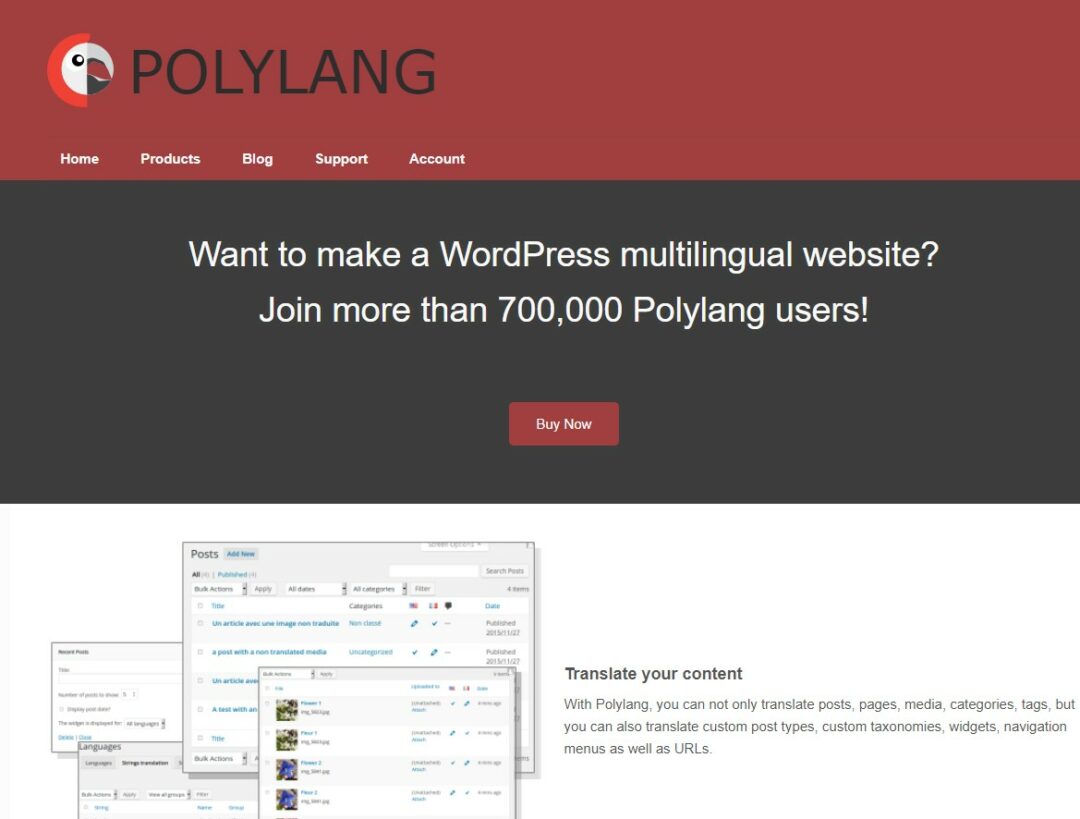
Polylang is a versatile and user-friendly WordPress translation plugin designed to make the process of creating a multilingual website smooth and efficient. With Polylang, website owners can easily manage content in multiple languages, providing a seamless experience for visitors around the world. One notable feature is its simplicity; Polylang allows users to translate posts, pages, categories, tags, and even custom post types effortlessly.
The plugin also ensures that each language version of the site maintains consistent SEO practices, aiding in discoverability across diverse linguistic audiences. Polylang’s intuitive interface and compatibility with various themes and plugins make it an excellent choice for those seeking a straightforward yet powerful solution for their multilingual website needs.
4. TranslatePress:
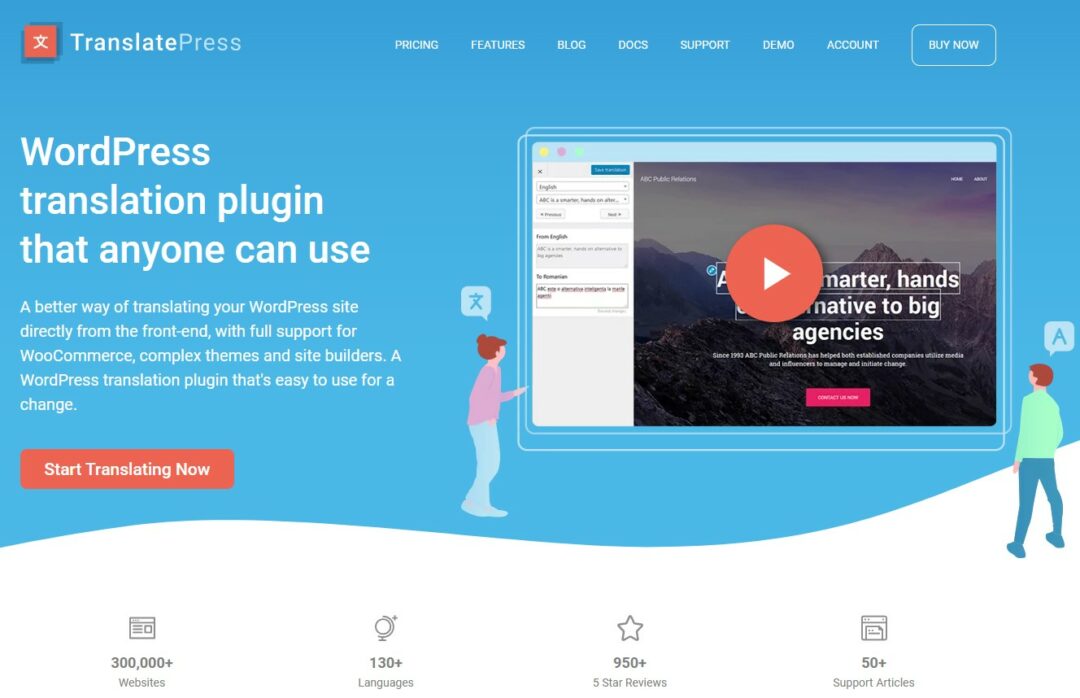
TranslatePress is a versatile WordPress translation plugin designed to simplify the process of making your website multilingual. Known for its user-friendly interface and powerful features, TranslatePress empowers users to translate content directly from the front end, providing a real-time preview of changes. With support for a wide range of languages, this plugin ensures that your website is accessible to a global audience.
TranslatePress also offers advanced features like SEO-friendly URL translation and compatibility with popular page builders, making it a comprehensive solution for creating a seamless multilingual experience on your WordPress site. Whether you’re a business owner, blogger, or content creator, TranslatePress opens up new possibilities for expanding your online reach and engaging with audiences from different linguistic backgrounds.
5. GTranslate:
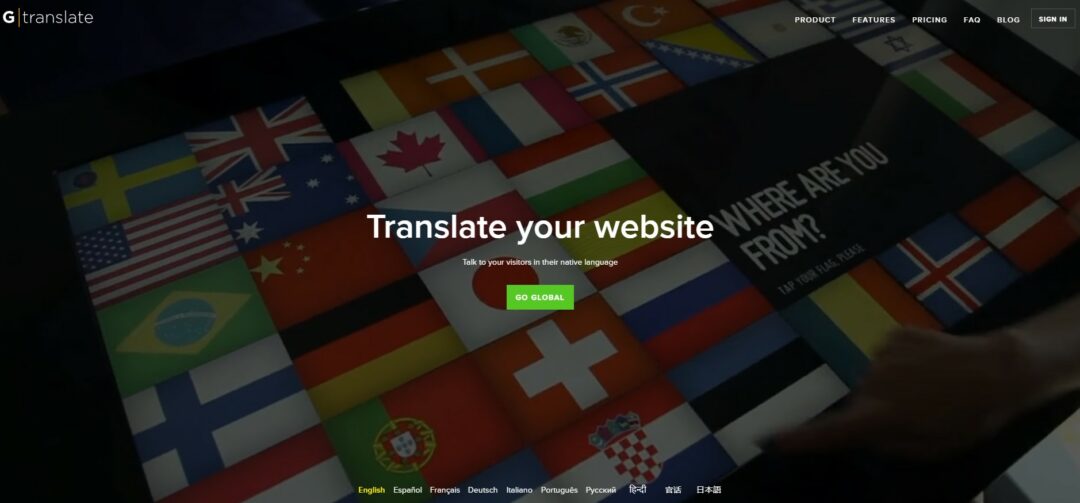
GTranslate is a versatile and user-friendly WordPress translation plugin that stands out for its simplicity and effectiveness. With a focus on providing a seamless translation experience, GTranslate ensures that website owners can reach a broader audience by making their content accessible in multiple languages.
The plugin utilizes Google Translate’s powerful translation engine, allowing for accurate and efficient translations. GTranslate offers an array of customization options, enabling users to tailor the language-switching functionality to match the aesthetics of their website. Whether you’re a business expanding internationally or a blogger aiming for a more diverse readership, GTranslate simplifies the process of creating a multilingual website, making it a valuable tool for those seeking an efficient and reliable translation solution.
6. MultilingualPress:
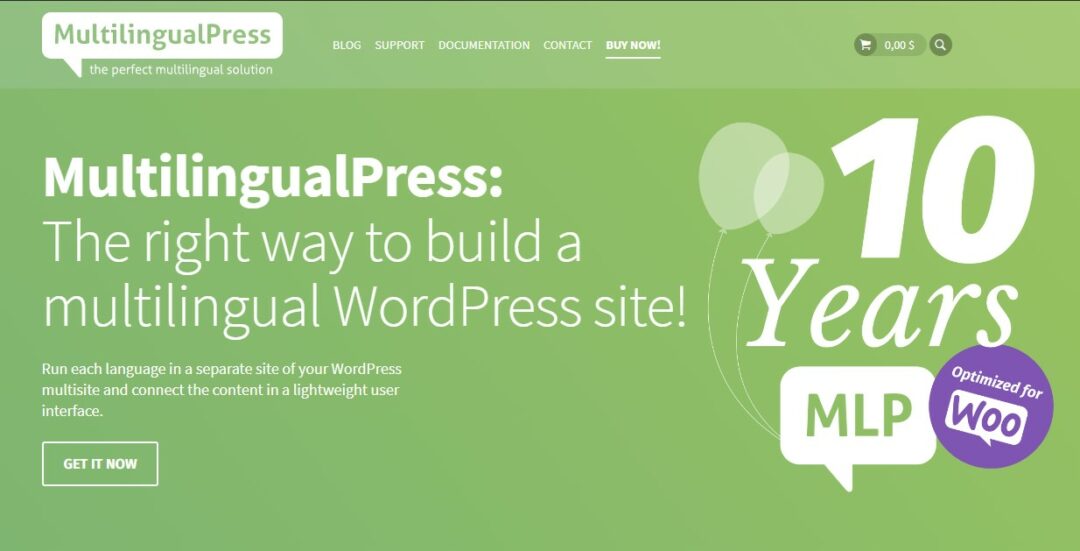
MultilingualPress is a robust WordPress translation plugin that stands out for its effectiveness in managing multilingual websites with ease. Offering a user-friendly interface and a comprehensive set of features, MultilingualPress simplifies the process of creating and maintaining content in multiple languages.
This plugin utilizes a unique approach by employing separate sites for each language, providing a seamless and efficient translation experience. With MultilingualPress, website owners can efficiently manage translations, maintain consistency across language versions, and enhance the overall user experience for a global audience. Its flexibility, scalability, and compatibility with other WordPress plugins make MultilingualPress a valuable tool for those seeking a reliable solution to make their WordPress sites truly multilingual.
7. Loco Translate:
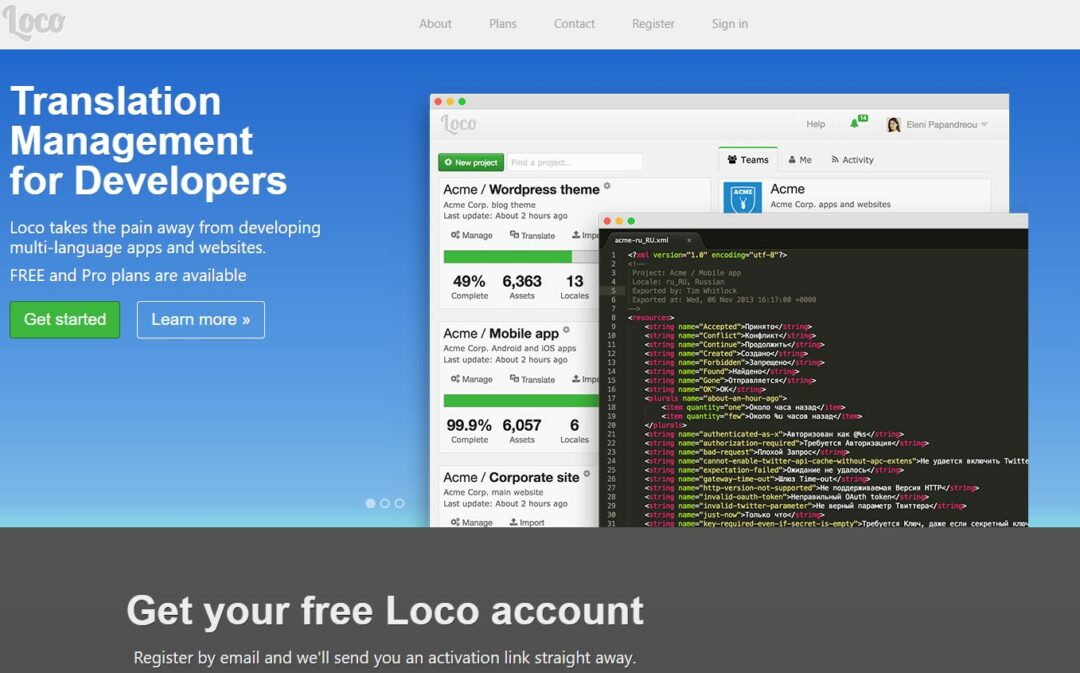
Loco Translate is a powerful WordPress translation plugin designed to simplify the localization process for website owners and developers. This user-friendly plugin allows users to translate their WordPress themes and plugins directly from the WordPress admin dashboard.
Loco Translate provides an intuitive interface, making it easy to manage and edit translations without the need for external tools. With support for both manual and automatic translations, users have the flexibility to choose the method that best suits their needs. Additionally, Loco Translate seamlessly integrates with the WordPress Customizer, ensuring a cohesive translation experience.
Whether you are a beginner looking to make your site multilingual or an experienced developer seeking efficiency, Loco Translate offers a robust solution for a streamlined and effective translation workflow.
How to Choose the Right Plugin for Your Needs:
Choosing the right translation plugin for your needs is a critical step in ensuring a smooth and effective transition to a multilingual website. As you navigate through the plethora of options, consider your specific requirements and the unique characteristics of your website. Start by evaluating the features offered by each plugin, focusing on aspects such as ease of use, translation accuracy, and compatibility with your existing plugins and themes. Additionally, take into account the user feedback and testimonials, as they provide valuable insights into the real-world experiences of other website owners.
Keep in mind the overall performance impact of the plugin on your website speed and functionality. Testing each plugin in a controlled environment can also help you gauge its performance and suitability for your specific use case. By carefully considering these factors, you’ll be well-equipped to choose a translation plugin that aligns seamlessly with your website’s goals and user experience expectation.
User Experience and SEO Impact:
The impact of a well-implemented translation plugin on user experience and SEO cannot be overstated. From a user experience perspective, providing content in multiple languages enhances accessibility and inclusivity, catering to a diverse audience. Visitors are more likely to engage with a website that speaks their language, creating a more personalized and user-friendly experience. This heightened engagement contributes to increased time spent on the site, reduced bounce rates, and a greater likelihood of conversion.
In terms of SEO, offering multilingual content can significantly improve a website’s search engine rankings. Search engines prioritize user experience, and by providing content in different languages, your website becomes more relevant to a global audience. This can lead to improved visibility in search engine results pages (SERPs), driving organic traffic and expanding the reach of your website.
Additionally, multilingual content increases the likelihood of attracting backlinks from diverse sources, further boosting your website’s authority and credibility in the eyes of search engines. Therefore, investing in a reliable translation plugin not only enhances user satisfaction but also plays a crucial role in elevating your website’s SEO performance.
Future Developments and Trends in WordPress Translation:
Looking ahead, the landscape of WordPress translation is poised for exciting developments and innovative trends. As technology continues to advance, translation plugins are likely to undergo significant enhancements, offering website owners even more sophisticated tools for managing multilingual content. With an increased focus on user experience and accessibility, we can anticipate improved machine translation algorithms, providing more accurate and contextually relevant translations.
Additionally, integration with artificial intelligence (AI) may become more prevalent, allowing plugins to adapt and learn from user interactions to deliver personalized and precise translations. The future may also witness a surge in automation features, streamlining the translation process and reducing manual effort for website administrators. As WordPress evolves, embracing these trends in translation technology will empower website owners to create more inclusive, dynamic, and seamlessly multilingual online experiences.
Conclusion:
In conclusion, this comprehensive guide has equipped you with the knowledge to make an informed decision when choosing a WordPress translation plugin. Whether you’re a business owner, blogger, or content creator, creating a multilingual website is a powerful strategy for reaching a global audience. Embrace the diversity of the online world, break down language barriers, and ensure that your website is accessible to users from around the globe. The path to a seamless and multilingual website experience starts here.
__





0 Comments